Cuttlefish are often overlooked in favor of their more well-known marine counterparts, fish like dolphins and sharks. But these creatures are true masters of the deep, possessing some of the most incredible survival skills of any species. From their unique anatomy to their unparalleled camouflage and mimicry abilities, cuttlefish are truly fascinating creatures.
In this article, we’ll dive deep into the world of cuttlefish to learn more about their amazing abilities.
Understanding Cuttlefish: An Overview
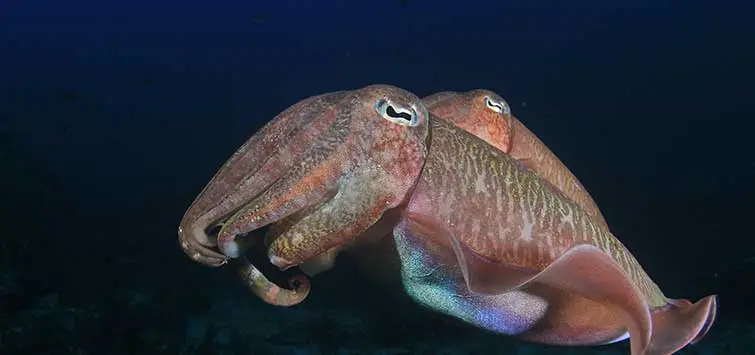
When it comes to fascinating creatures of the ocean, cuttlefish are definitely at the top of the list. These cephalopods are known for their unique appearance, intelligence, and interesting behavior. Let’s take a closer look at what makes cuttlefish so remarkable.
What Are Cuttlefish?
Cuttlefish, scientifically known as Sepia officinalis, are a type of cephalopod that belong to the same family as squid and octopuses. They are marine animals that can be found in warm and temperate coastal waters around the world, including the Mediterranean Sea, the English Channel, and the waters off the coast of Australia. Cuttlefish have a distinct flattened body and are known for their large, W-shaped pupils.
One of the most interesting things about cuttlefish is their ability to change color and texture. They have specialized cells called chromatophores that allow them to change their skin color in order to blend in with their surroundings or communicate with other cuttlefish.
Additionally, they can change the texture of their skin to create patterns and shapes that help them to camouflage themselves.
Another unique feature of cuttlefish is their internal shell, known as the cuttlebone. This structure is made of calcium carbonate and helps the cuttlefish to control its buoyancy in the water.
The Cuttlefish Species Family Tree

There are over 120 known species of cuttlefish, ranging in size and color. Some of the most well-known species include the cuttlefish ink the flamboyant cuttlefish, the giant cuttlefish, and the common cuttlefish. Each species has its own unique characteristics and behaviors.
For example, the flamboyant cuttlefish, found in the waters off of Indonesia and the Philippines, is known for its bright colors and unique swimming style. It moves by using its two front arms, which are longer than the others, to “walk” along the ocean floor.
The giant cuttlefish, found in the waters off of southern Australia, can grow up to three feet in length and weigh up to 22 pounds. They are known for their ability to change color and texture rapidly, making them one of the most skilled camouflage artists in the ocean.
The common cuttlefish, found in the Mediterranean Sea and the eastern Atlantic Ocean, is the most widely studied species of cuttlefish. Researchers have discovered that this species is capable of complex learning and can remember information for up to an hour.
Overall, cuttlefish are fascinating creatures that continue to captivate researchers and ocean enthusiasts alike. Their unique abilities and behaviors make them a truly remarkable species.
The Unique Anatomy of Common Cuttlefish
When it comes to fascinating creatures of the sea, Sepia officinalis are definitely at the top of the list. These cephalopods are known for their unique anatomy, which includes some truly remarkable features that help them survive and thrive in their underwater environment.
The Cuttlebone: A Key Feature
One of the most interesting aspects of cuttlefish anatomy is their cuttlebone, which is a hard, calcified structure located inside their body. This bone plays a key role in the cuttlefish’s survival, as it helps regulate their buoyancy in the water. The cuttlebone is also used for protection, providing a shield against predators.
The cuttlebone is made up of a series of chambers that are filled with gas and fluid. By adjusting the amount of gas and fluid in these chambers, the cuttlefish can control their buoyancy, allowing them to float or sink as needed. This is an important skill for the cuttlefish, as it helps them conserve energy and avoid predators.
The Wonders of Sepia officinalis Skin

Another fascinating aspect of cuttlefish anatomy is their skin. Cuttlefish have a remarkable ability to change the color and texture of their skin, allowing them to blend seamlessly into their surroundings. This is due to millions of tiny pigmented cells called chromatophores, which are located in the cuttlefish’s skin.
The cuttlefish can control these chromatophores through muscular movements, causing them to expand or contract and change color. This allows the cuttlefish to create intricate patterns and designs on their skin, which they use for communication, camouflage, and even attracting mates.
Cuttlefish Eyes: A Window to Their World
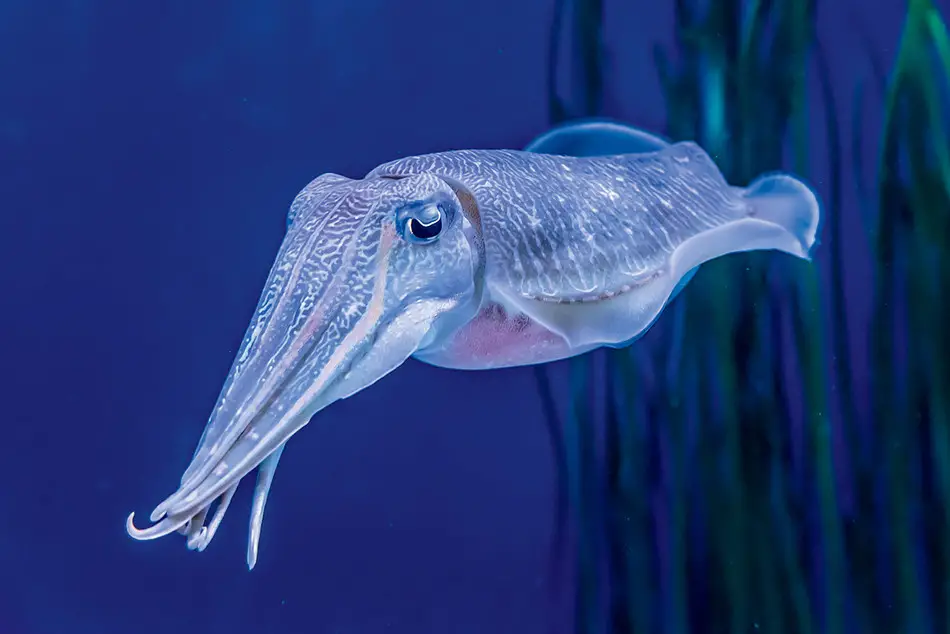
Perhaps one of the most impressive features of cuttlefish anatomy is their eyes. Cuttlefish have some of the most advanced eyes in the animal kingdom, with a level of visual acuity that is unmatched by many other creatures.
One of the most remarkable things about cuttlefish’s eyes is their ability to adjust the shape of their lens. This allows them to focus on objects at different distances, much like a camera lens. Cuttlefish also have excellent night vision, which allows them to hunt and navigate in low-light conditions.
In addition to their impressive visual abilities, cuttlefish eyes are also noteworthy for their unique structure. Unlike human eyes, which are round, cuttlefish eyes are shaped like a W. This unusual shape allows them to see a wider field of view than other animals with similar-sized eyes.
How Cuttlefish Mate Other Cuttlefish
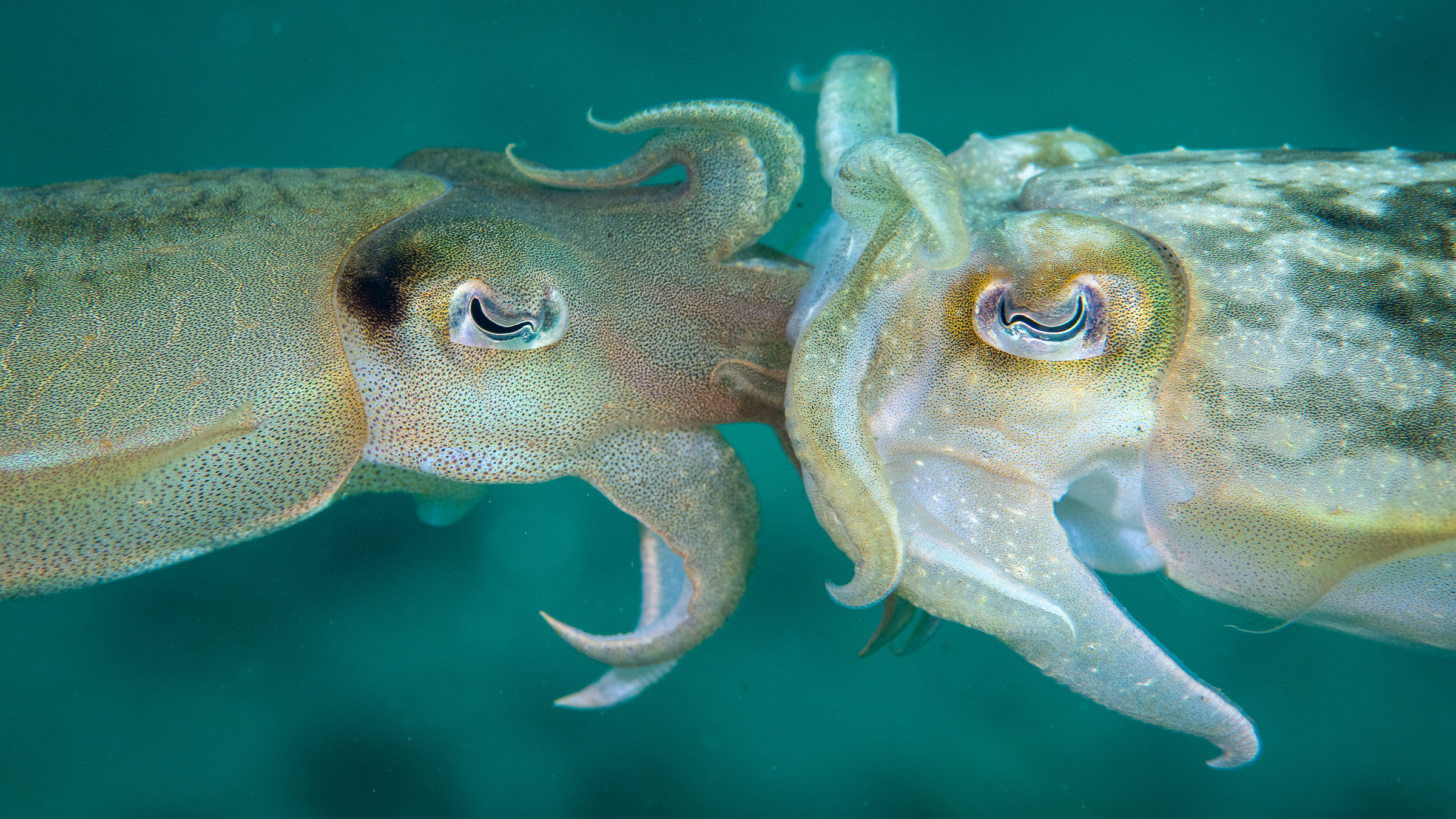
When it comes to the captivating world of common cuttlefish, their mating season unveils a spectacular display of behavior and courtship rituals. Whether it’s the common cuttlefish (Sepia officinalis), the cuttlefish, or other cuttlefish species, their mating rituals never cease to amaze.
During that season, male cuttlefish engage in fierce competition, vying for the attention of females. These males, with their unique body patterns and vibrant skin color, put on elaborate displays to attract mates and assert their dominance. Their mesmerizing dances and synchronized movements are a true marvel to behold.
The male cuttlefish’s courtship efforts are not limited to their mesmerizing appearance. They also utilize their eight arms and two elongated tentacles to communicate and interact with potential mates. These appendages, along with their remarkable jet propulsion and camouflage abilities, enhance their chances of successfully attracting a female.
Once a female has been captivated, the pair engage in a mesmerizing dance, their bodies intertwined as they prepare for reproduction. The female cuttlefish lays her eggs in carefully constructed nests, attaching them to underwater structures or hiding them within crevices. This ensures the safety and protection of the eggs and the developing embryos.
Common Cuttlefish, like their relatives the squid and octopuses, are cephalopods known for their intelligence and complex behaviors. These fascinating marine mollusks have an internal structure called a mantle cavity that enables them to control buoyancy and movement, while their remarkable color-changing skin further enhances their ability to attract mates and confuse predators.
Understanding the intricacies of cuttlefish mating not only provides insight into the fascinating world of sea animals but also highlights the importance of conserving these remarkable creatures. As an important species in coastal regions around the world, cuttlefish play a crucial role in maintaining the balance of marine ecosystems.
So, the next time you have the opportunity to observe the enchanting mating rituals of common cuttlefish in their natural habitat, take a moment to appreciate the beauty and complexity of these remarkable creatures. Their dances, their colors, and their undeniable charm remind us of the diversity and wonder that exist beneath the waves.
Masters of Camouflage and Mimicry
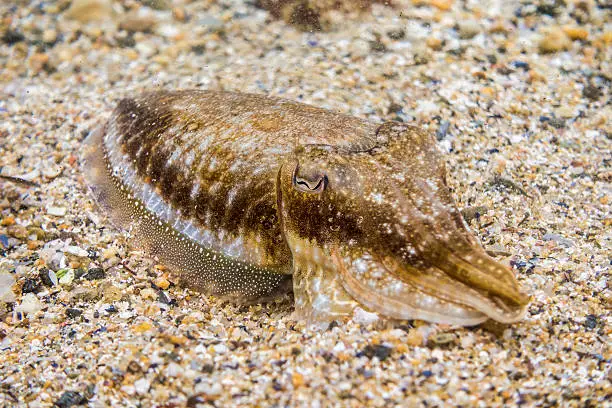
Underwater creatures have evolved some of the most fascinating and complex defense mechanisms in the world. Among them, the cuttlefish stands out as a true master of disguise. These cephalopods have developed a remarkable ability to change their color and texture, allowing them to blend in with their surroundings and avoid detection by predators.
But how do they do it?
How Cuttlefish Change Color
Cuttlefish use a sophisticated system of pigment cells called chromatophores to change color. These tiny sacs of pigment are surrounded by muscles that can expand or contract them, allowing the cuttlefish to change their skin color in a matter of seconds. By controlling the size and distribution of the chromatophores, common cuttlefish can create a wide range of colors and patterns, from bright reds and yellows to subtle greens and grays.
But color is just one part of the equation. Cuttlefish also have the ability to change the texture of their skin, making it bumpy or smooth, rough or soft, depending on their surroundings. This is achieved through the use of specialized skin cells called papillae, which can be raised or lowered to create different textures.
Imitating Shapes and Textures

But cuttlefish don’t stop at color and texture. They can also manipulate their skin to mimic different shapes and textures, such as rocks, seaweed, or even coral. This helps them blend in with their environment even more convincingly, making it difficult for predators to detect them. By changing the shape and texture of their skin, common cuttlefish can create the illusion of being part of the background, rather than a separate organism.
Scientists have discovered that cuttlefish are able to change their skin texture by controlling the distribution of pigmented cells and non-pigmented cells in their skin. By arranging these cells in different patterns, cuttlefish can create a range of textures, from smooth and flat to rough and spiky.
Deceptive Displays: Mimicking Other Species
But common cuttlefish are not just masters of camouflage. They are also skilled mimics, able to imitate other species in order to deceive their target. This is a predatory tactic known as aggressive mimicry, and cuttlefish are some of the most skilled practitioners.
For example, cuttlefish can change their color and shape to imitate crabs or fish, luring in unsuspecting kill. They can even mimic the movements of their victim, making it even more convincing. By using aggressive mimicry, cuttlefish are able to catch prey that might otherwise be too fast or agile for them to catch.
The common cuttlefish is a fascinating creature that has evolved some of the most remarkable defense mechanisms in the animal kingdom. Its ability to change color, texture, and shape has made it a true master of camouflage and mimicry, allowing it to survive and thrive in even the most challenging environments.
Hunting Techniques
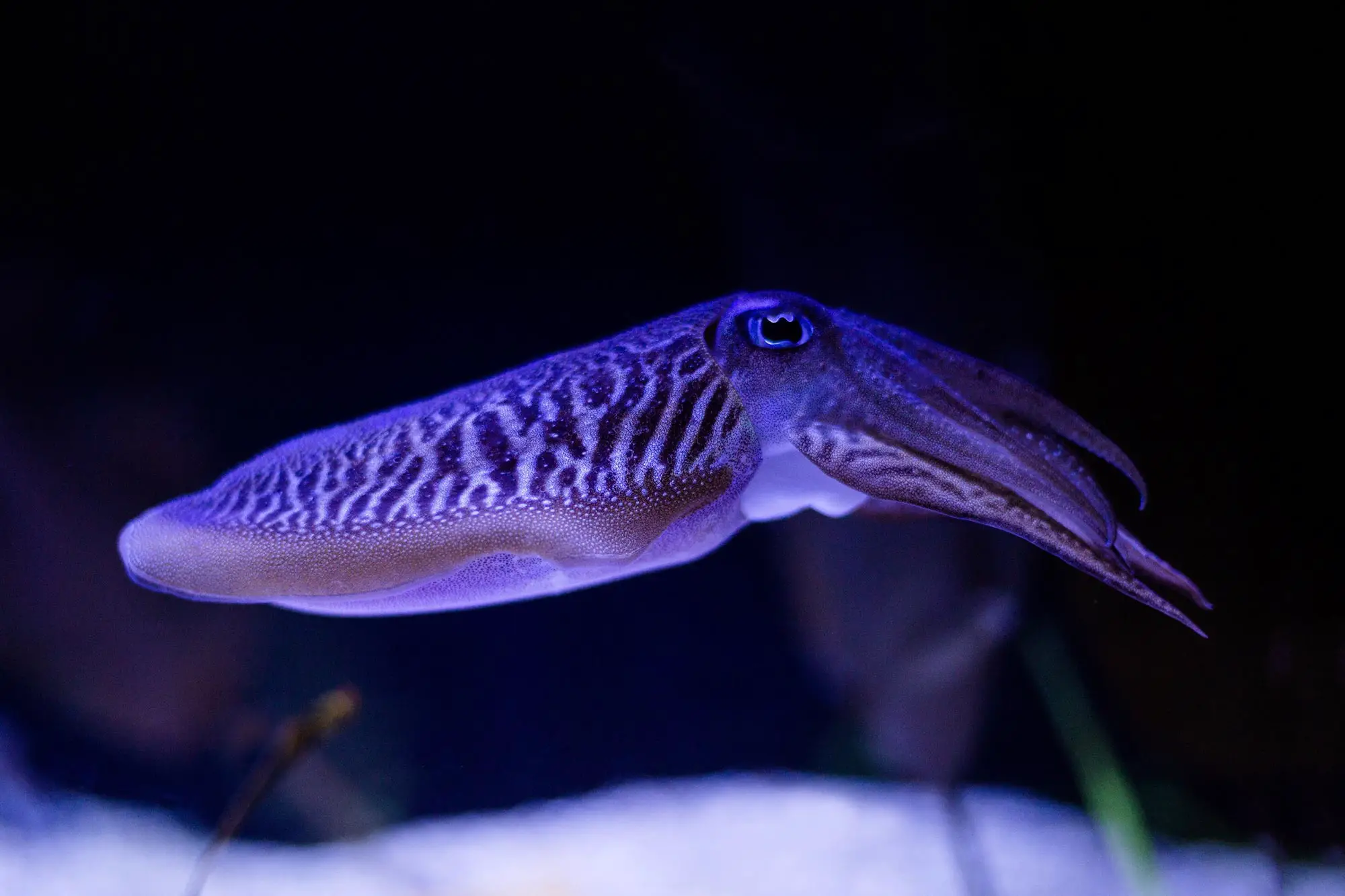
As one of the most intelligent and adaptable creatures in the ocean, the cuttlefish has developed a variety of hunting techniques to capture its kill. From its deadly arms and tentacles to its bioluminescent displays, the cuttlefish is a master of the hunt.
The Cuttlefish’s Deadly Arms and Tentacles
When it comes to capturing prey, the cuttlefish’s primary method is to use its arms and tentacles. Equipped with two specialized feeding tentacles, the common cuttlefish can quickly grasp and pull in prey. These tentacles are also lined with suckers that help to immobilize target, making it easier for the cuttlefish to consume.
But the cuttlefish’s arms are equally deadly. With powerful muscles and an array of suckers, these arms can grab and immobilize prey with ease. Once it is captured, the cuttlefish will use its sharp beak to break through the tough outer shell or skin of its victim.
Luring Prey with Bioluminescence
While the cuttlefish’s arms and tentacles are powerful tools in the hunt, some species of cuttlefish use even more sly tactics to capture their kill. By producing bioluminescent flashes and patterns, these cuttlefish can attract unsuspecting prey to their death.
Using specialized cells called chromatophores, the common cuttlefish can change the color and pattern of its skin to blend in with its surroundings or to create mesmerizing displays that lure target in. Once the victim is within range, the cuttlefish will strike with lightning-fast speed, using its arms and tentacles to capture its meal.
The Role of Cuttlefish in the Food Chain

Despite their impressive hunting skills, cuttlefish are also an important part of the marine food chain. They are chased upon by a variety of animals, including sharks, dolphins, and sea birds. Their role in the ecosystem helps maintain balance and diversity in the ocean.
Cuttlefish are also a valuable food source for humans. In many cultures, cuttlefish are considered a delicacy and are used in a variety of dishes, from sushi to stews.
Overall, the cuttlefish is a fascinating and complex creature with a variety of hunting techniques and a crucial role in the marine ecosystem.
In Conclusion: The Amazing Abilities of Cuttlefish
After learning about all the incredible abilities and survival tactics of cuttlefish, it’s clear that these creatures are truly amazing. From their unique anatomy to their unparalleled camouflaging and mimicry skills, cuttlefish have evolved in extraordinary ways to survive in their ocean environment.
These fascinating creatures serve as a reminder of the incredible diversity of life that exists on our planet – including in the depths of the ocean.

